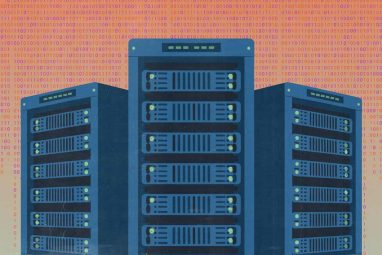How to Scale GenAI in the Workplace
Enthusiasm plateaus. Training gaps. AI shaming. Pharma giant Novo Nordisk faced and beat all these challenges while growing generative AI tool usage.
News
- Instagram Tightens Teen Controls Amid Safety Scrutiny
- AI Public Servants and Biotech Breakthroughs Make Waves at GITEX 2025
- From Oil to AI: UAE’s Stargate Campus Targets 200 MW Online by 2026
- GITEX 2025: Sam Altman Calls for Cheap, Plentiful AI to Close Global Gap
- Ericsson, e& Ink Deal to Upgrade UAE’s 5G Core Network
- OpenAI Bans Accounts Tied To China, Russia, North Korea, Says ChatGPT Flags More Scams Than It Fuels

Carolyn Geason-Beissel/MIT SMR | Getty Images
AS GENERATIVE AI’S EVOLUTION CONTINUES, the next challenge for leaders is clear: making GenAI scale and deliver measurable value across their organizations.1
As companies move from experimentation to enterprisewide adoption, many struggle not with the tools themselves but with the organizational transformation required to integrate them meaningfully into people’s daily work. Tools will keep evolving: It is the human side of the equation that determines whether GenAI initiatives truly succeed.
We studied one of the largest real-world generative AI deployments to date — at multinational pharmaceutical company Novo Nordisk. Its experience shows that success hinges not just on infrastructure but on how people think, adapt, and collaborate with AI. One critical lesson: While GenAI adoption and broader digital transformations have common roots, generative AI is uniquely disruptive, reshaping the nature of work itself in unprecedented ways.
Like many organizations, Novo Nordisk began with a familiar expectation: that GenAI would primarily drive productivity.2 Guided by the leadership principle “time is the ultimate currency” and a campaign dubbed “Make Your Time Count,” the company launched its enterprisewide rollout of Microsoft’s Copilot GenAI tool in early 2024, with the goal of saving time and improving efficiency. And in many ways, the company hit that goal.
Each employee saved 2.17 hours per week, on average, once they began using the tool. But something unexpected also happened: Those hours weren’t what employees valued most. Employee satisfaction with Copilot was three times more strongly correlated with perceived improvements in work quality than with time saved. Employees reported quality enhancements in content summarization, content creation, and ideation. Interestingly, many employees reinvested the time they saved into people interactions, strategic planning, and creative work. As one put it, “I can spend more time and energy dedicated to strategizing and planning the rollout of my project.”
This insight challenges a central assumption of many GenAI rollouts: that the main value of the technology lies in raw efficiency. In practice, the promise of generative AI is broader and more human-centered.
Novo Nordisk’s rollout experience, growing from a few hundred Copilot users in January 2024 to 20,000 in February 2025, offers important lessons for leaders who are grappling with scaling GenAI. Through surveys of over 3,000 employees, internal analytics, and front-line interviews, we uncovered both employee dynamics and field-tested leadership approaches for driving meaningful adoption at scale.
Scaling GenAI: It’s Not Plug-and-Play
Scaling generative AI isn’t just a technical challenge — it’s a change management marathon. The real work lies in supporting employees as they experiment, struggle, and eventually find their stride with these new tools.
At Novo Nordisk, Copilot adoption was nonlinear, unfolding in three phases. First came a surge: After about a month, 23% of people were frequent users and 74% were moderate users. Then came an interest dip, where 15% of the early-adopter group became inactive after three to four months, and their average time saved decreased from 2.29 to 2.14 hours per week. One user shared, “I have not really found out what to use it for. I tried a bit in the beginning, with limited success, and have not really tried since.” A similar pattern appeared in app usage: Productivity and quality gains dipped after users expanded their use of Copilot from one or two apps (such as Word and Excel) to four or five, but it then rebounded at six or more.
This midcycle dip is typical of GenAI adoption. People’s initial excitement gives way to frustration as easy wins are exhausted and integration challenges mount. Left unchecked, this dip can calcify into abandonment. Our research revealed that it takes only a few disappointments to destroy people’s enthusiasm for the technology; in other words, a user may give up on using Copilot after a few unsuccessful tries. However, employees who persist beyond this dip often report substantial performance gains, likely due to accumulated learning effects. This is a pivotal moment for targeted training interventions.
To counter the midcycle dip, Novo Nordisk implemented a suite of enablement strategies, including:
- Targeted training interventions timed around key adoption phases.
- License reallocation and waiting lists to reinvigorate interest.
- A network of GenAI champions to provide contextual guidance and sustain adoption momentum.
- Targeted microcommunications, such as tip-focused newsletters, to address user-reported challenges.
- Ongoing feedback loops, such as pulse surveys, usage dashboards, and competitor benchmark tracking, to evolve support as user needs changed.
As the company’s experience highlights, generative AI requires sustained training and support. GenAI effectiveness is about training people, not just AI models. Leaders should foster an ecosystem where employees feel supported, informed, and inspired to push the technology’s capabilities further.3
Tailor GenAI Enablement by Business Function
Different business functions require different types of support, however. Recognizing how people across roles and mindsets engage with generative AI is key to driving meaningful adoption.
At Novo Nordisk, Copilot’s impact varied significantly across functions, prompting a shift from uniform deployment to targeted enablement. Analysis comparing time savings and quality improvements across corporate, commercial, manufacturing, and research areas revealed sharp disparities.
Corporate and commercial teams were among the highest-ranking in terms of improvements in productivity and quality of work with Copilot. On the flip side, departments like Research, Data & AI, and Clinical Development, while still deriving benefits, reported smaller gains in both time savings and quality improvements. STEM employees, accustomed to deterministic systems with consistent outputs, often struggled with GenAI’s probabilistic nature. Because generative AI operates on models that produce variable responses, its outputs can clash with precision-driven workflows that demand reliability. AI hallucinations (incorrect or nonsensical outputs) further complicated tool integration into research-oriented tasks, where accuracy and reliability are paramount. These hallucinations manifested in various ways, including fabrications, factual inaccuracies, logic or reasoning errors, mathematical mistakes, and making choices based on irrelevant patterns.4
This variability undermined people’s trust in the system and posed significant barriers to adoption. As one researcher put it, “I don’t see how to apply it in my type of work.” In contrast, a sales user described it as “a game changer for me in many facets of my job.” Adapting to GenAI would require a mindset shift among the STEM employees: They would have to learn to navigate and manage such tools’ inherent unpredictability.
To facilitate the process, Novo Nordisk pivoted from a uniform rollout to tailored enablement. It launched function-specific onboarding, created use-case playbooks and learning libraries aligned to job roles, and worked with Microsoft to customize Copilot features for different teams. This flexibility ensured that employees in both creative and precision-driven roles could find meaningful applications aligned with their workflows.
Surprise Champions: More Experienced Employees
Contrary to some myths about digital natives, the data showed that Novo Nordisk’s senior employees tended to use generative AI more effectively than their younger peers. Survey results indicated that experienced workers outperformed junior colleagues in both productivity gains and work quality improvements. Why? These more senior employees’ deep understanding of workflows allowed them to quickly identify places where tools like Copilot could add value. Additionally, they were better equipped to assess AI-generated outputs and integrate them into complex tasks with greater precision.
Younger employees, in contrast, often lacked the context to spot high-impact opportunities. One junior staffer said, “I don’t know enough actual use cases; what can I use it for?” Another one noted, “I have not had a specific use case where I could clearly see the advantages of using/exploring Copilot.”
The lesson: Rather than assuming that younger workers will lead the GenAI charge, organizations should empower experienced employees to act as amplifiers.
After this insight upended Novo Nordisk’s leaders’ assumptions, they established a cross-functional champion network composed largely of experienced staff members to lead peer demo sessions, deliver role-relevant training, and share practical examples tailored to specific job contexts. Meanwhile, internal corporate social media communities like Viva Engage (a social collaboration tool integrated into Microsoft Teams) enabled knowledge-sharing between senior and junior employees, furthering adoption.
By investing in senior employees as adoption champions, leaders can tap into these people’s contextual expertise to drive meaningful GenAI use by tailoring training to workflows and seniority, and ensuring that junior staff members receive clear, accessible use cases to build their confidence. By aligning enablement with experience, organizations can unlock GenAI’s potential across all levels.
Generative AI performance isn’t about tech savviness — it’s about contextual fluency, confidence, and the human ability to integrate new tools into nuanced workflows.
Overcoming Cultural Resistance and AI Shaming
Not everyone at Novo Nordisk welcomed Copilot. Cultural resistance and so-called AI shaming posed significant hurdles, with some employees viewing GenAI as unethical or akin to cheating. One user said, “I find Copilot to be ethically dubious: extremely high energy consumption, built on shameless practices of privacy invasion and rights violations.”
Others feared disrupting routines, making mistakes, or facing scrutiny for AI-generated outputs. One user said, “I’m afraid that what I do with Copilot is wrong or I will do a faulty job.” Such attitudes resulted in employee reluctance to integrate the technology into their workflows. Concerns about output ownership and workflow changes fueled further resistance to GenAI.
Such cultural resistance, subtle but real, can stall adoption even in tech-heavy organizations. Novo Nordisk tackled the challenge with a multifaceted strategy, focusing on transparency and trust. The company rolled out ethical use guidelines, clarified expectations around output ownership and disclosure, and launched the “Spend Time to Save Time” campaign to reframe GenAI as a strategic enabler, not a shortcut.
Mark Navas, the Novo Nordisk executive in charge of the Copilot rollout, reinforced this message: “Copilot is about empowering our people to do better work, not cutting corners.” Regular feedback loops, including surveys and usage analytics, allowed the company to monitor resistance and adapt support. Champion-led demos normalized adoption by showcasing real-world examples of GenAI’s successful use. Safe spaces like the Viva Engage platform allowed employees to ask questions, share concerns, and build confidence without fear of judgment.
Leaders scaling GenAI can adopt these strategies, as Novo Nordisk did, to mitigate cultural resistance:
- Clarifying ethical use. Develop and communicate guidelines on AI use, ownership, and disclosure. Ensure that employees understand how to integrate GenAI transparently.
- Normalizing GenAI use through champions. Deploy experienced employees to demonstrate practical, ethical applications, which makes GenAI more relatable and credible.
- Fostering safe spaces. Build internal communities for peer support, where employees can voice concerns and share successes without judgment.
- Addressing trust issues proactively. Train employees on data privacy, environmental impact, and responsible use to build trust and counter ethical objections.
- Reframing AI’s role.Position GenAI as a tool for enhancing work quality, not replacing human effort, through consistent leadership messaging.
Addressing cultural barriers head-on, Novo Nordisk took these approaches to transform resistance into engagement and pave the way for sustained adoption.
Addressing cultural barriers head-on, Novo Nordisk took these approaches to transform resistance into engagement and pave the way for sustained adoption.
People Are the Platform
Novo Nordisk plans to further expand its Copilot rollout, from approximately 20,000 to 37,000 employees in 2025. (The company has approximately 75,000 workers globally.) According to chief digital and information officer (and coauthor) Anders Romare, the company’s future with generative AI will depend on moving beyond initial excitement to building systems that support ongoing learning, trust, and integration into real workflows.
As the company continues its rollout, one lesson has become increasingly clear: GenAI success is less about the tools themselves and more about the people who use them, and how they adapt, collaborate, and take ownership of change.
That success isn’t driven by automation alone but by people willing to rethink how they work, support one another, and build confidence in new ways of working alongside AI. Champions become change agents. Communities become accelerators. And experience, not youth, emerges as a hidden catalyst of adoption.
If you want to scale generative AI successfully, start with people, not code.




